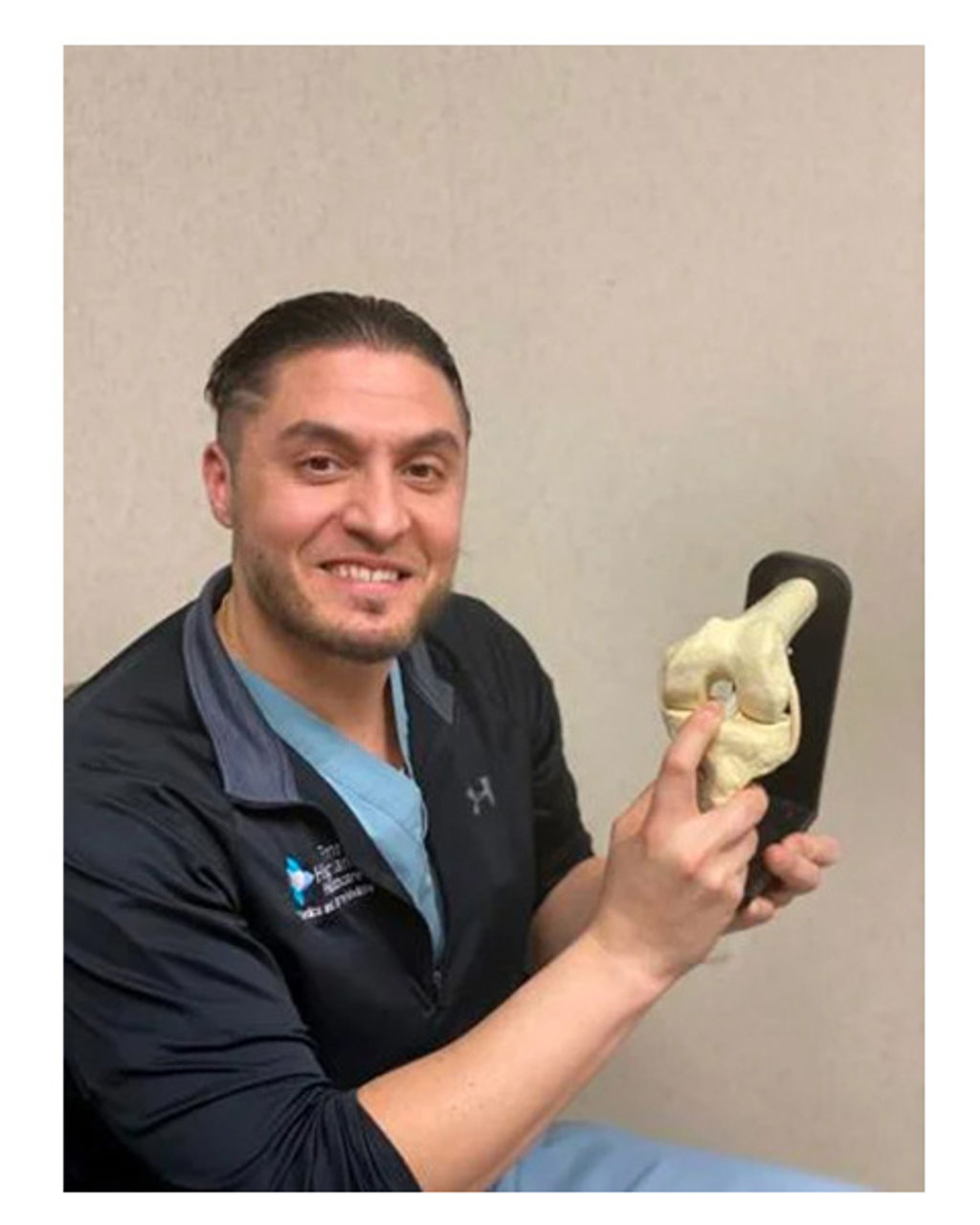Innovative ACL Reconstruction Surgery Offers Faster Recovery

ACL tears are a common orthopedic injury, with more than 100,000 people each year experiencing a tear. Recovering from an ACL reconstruction can be a lengthy process, with athletes generally needing to wait a year or longer to safely return to play. But a new procedure pioneered at Penn Highlands Healthcare is changing how athletes and others recover from ACL reconstruction surgery.
What is the ACL?
“The ACL is one of four main ligaments in the knee that connect the femur, or thighbone, to the tibia, or shinbone,” said Matthew A. Varacallo, MD, a board-certified orthopedic surgeon who serves as Director of Orthopedic Robotic Surgery at Penn Highlands Healthcare. “These four ligaments hold the bones together and control joint movement. The ACL is the ligament in the middle of the knee, and it prevents the shinbone from sliding in front of the thighbone.”
How do ACL injuries occur?
When you move your legs, the ACL prevents the tibia from sliding too far forward. But if you experience a sudden stop or change of direction, the ACL can become strained, resulting in a partial or complete tear of the ligament.
ACL injuries often occur during activities that put stress on the knee, such as football, basketball and soccer, or even when participating in more recreational exercise or sports. Common motions that can cause an ACL injury include:
- Suddenly slowing down and changing direction.
- Pivoting with your foot firmly planted.
- Landing awkwardly from a jump.
- Suddenly stopping.
- Collisions or impacts to the knee.
Who is at risk for ACL injuries?
Anyone can experience an ACL injury, but there are factors that could put some individuals at a higher risk. Women are three times more likely to suffer an ACL injury than men. The exact reason why is unknown, but it may be because of differences in anatomy, muscle strength and hormonal influences.
Other risk factors can include:
- Participating in certain sports, such as soccer, football, basketball, gymnastics and downhill skiing.
- Poor strength conditioning.
- Using faulty movement patterns, such as moving the knees inward during a squat.
- Wearing footwear that does not fit properly.
- Using poorly maintained sports equipment, such as ski bindings that aren't adjusted properly.
- Playing on artificial turf.
What are symptoms of an ACL injury?
Many people might hear or feel a pop or snap in the knee at the time of the injury, and the pain is often excruciating. Other symptoms may include:
- Inability to continue activity.
- Swelling of the knee.
- Decrease or loss of range of motion.
- Inability to bear weight on leg.
How are ACL injuries treated?
Treatment depends on the severity of the injury, which are classified in three grades:
- Grade 1: The ACL has suffered mild damage but still provides adequate stability to the knee joint.
- Grade 2: The ACL is stretched and partially torn (this is rare).
- Grade 3: The ACL is torn completely in half and no longer provides stability to the knee joint (this is the most common type of injury).
For grade 1 injuries, nonsurgical treatment is usually the first course of action. This may include bracing the knee, undergoing physical therapy and taking a slow progression back to regular activities.
Surgery is often recommended for partial and full tears (grades 2 and 3). During traditional ACL tear surgery, the orthopedic surgeon typically drills two sockets or tunnels into the patient’s bones, one in the femur and one in the tibia. The surgeon then positions a tendon taken from another part of your knee or a deceased donor. This is called a graft. The surgeon uses the tunnels to accurately position the graft and attach it to the bones with screws or specialized fixation implants. Over time and following the proper physical therapy and rehabilitation exercises after surgery, the tendon eventually transforms to a ligament.
An innovative new procedure.
Traditional ACL reconstruction surgery, however, has a high rate of re-injury. One third of athletes re-tear the same side or injure the other knee, which can overcompensate while the reconstructed ACL heals.
To help patients recover faster and reduce the rate of re-injury, Dr. Varacallo helped pioneer a new procedure for ACL tear surgery called the “fertilized ACL” technique.
“During the fertilized ACL procedure, the surgeon injects a mixture of stem cells from the patient’s bone marrow mixed with bone graft into the tunnels to stimulate bone tunnel consolidation and encourage faster and stronger ligament healing,” said Dr. Varacallo.
This cutting-edge procedure can allow the tunnels to heal more reliably and more quickly which allows the graft to incorporate into the body faster. In fact, four weeks after surgery, the bone tunnels are often not even visible.
Penn Highlands Healthcare offers comprehensive orthopedic and sports medicine care for all types of bone and joint conditions, and Dr. Varacallo is one of only two surgeons in the U.S. currently performing the fertilized ACL tear surgery technique. For more information, visit www.phhealthcare.org/orthopedics.

